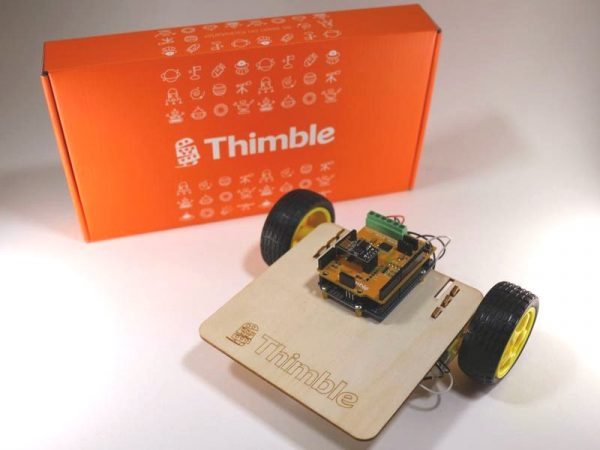
I’m sure you’ll be shocked to discover that when I was in high school, most of my elective classes were trended toward science. My two all-time favorite classes where “Power and Energy Technology” and “Robotics”.
In both those classes we were tasked with building simple machines using motors, circuit boards, power supplies, etc. I enjoyed those classes so much, I was actually disappointed when the bell rang.
Recently, Julie asked if anyone was interested in reviewing Thimble, an electronic building kit. I examined the product’s website and found myself flush with memories of high school.
I volunteered to review the kit, and a few weeks later a Wi-Fi robot kit was waiting at my doorstep.
What is Thimble
According to Thimble’s website:
Thimble teaches beginners a basic understanding of building electronics through a monthly kit with carefully curated and easy to follow instructions. We’ve designed engaging kits that allow you to create, learn and explore by combining hands on hardware and sometimes a little software accompanied by video tutorials. Examples of some of our first projects include a wifi-robot, LED cube, robotic arm, alarm clock, weather station, quadcopter, etc. Every month it’s a new project.
I’ve heard of the book of the month club, the beer of the month club, and even the BBQ sauce of the month club, but never the DIY electronics of the month club; this seemed like a pretty exciting idea.
Thimble offers four different subscription prices; the longer the commitment, the cheaper the price.
Never having explored this type of service before, I wasn’t immediately sure if these prices were reasonable.
A quick Google search revealed that robot kits range from $12 to $300+. As you may have assumed, the cost generally reflects the quality of the robot. Having yet to interact with Thimble, I decided it was too early to determine how reasonable the cost was.
The Kit
Although I was excited to review Thimble, I wasn’t entirely sure what I was getting myself into. In my opinion, Thimble’s homepage doesn’t provide enough specifics on their product.
The homepage does explain the service is recommended for ages 13 and up, it’s okay for beginners, and every project involves soldering; however, the homepage does not provide any photos of the current project, or what the current project even is.
You can find that information, but it requires digging a little deeper – deeper than I think most people are going to do at first glance.
When I did finally get the opportunity to open the kit, I was a bit surprised to see how involved it appeared to be.
I wouldn’t say I was intimidated, but I definitely didn’t anticipate just how do-it-yourself this project was going to be.
I was expecting to solder some pieces into a circuit board and maybe attach some motors. I didn’t expect to be soldering several multi-pin components or stripping wire.
These aren’t tasks I’ve never performed before; it was just surprising to find a beginners, 13 and up kit so involved.
Building the Wi-Fi bot
Once you’re prepared to build the bot, you go to the Thimble’s learning platform and follow the links to the tutorial.
The first part of the tutorial provides a detailed list of all the parts included in the kit and a list of suggested tools.
Next, you are given two options for building the bot. You can follow a 25-minute video of the process from start to finish, or you can go through a step-by-step tutorial with accompanying videos and photos.
I opted for the step-by-step process.
The first step in the process is to solder several components onto the circuit board.
As you can see, there are a lot of pins to solder and not a lot of room for error.
Although I have experience soldering, I haven’t had much practice in years; while I earlier said I wasn’t intimidated by the kit, that all changed once I saw how much I had to solder.
I grabbed my soldering iron, warmed it up, and went to work… the results weren’t pretty.
It would be an understatement to say I struggled with the soldering. Several times I accidentally bridged two pins and had to rectify that. Other times I ended up with messy globs of solder halfway up the pin.
I understand practice makes perfect, and I’ve been out of practice for years, but I’d guess I have more experience soldering than most people. I can’t imagine many beginners would have more success than I had.
The next couple of steps involved soldering more components. Some of the components were spaced a bit farther apart, making my job a bit easier; however, the results weren’t radically different.
Once all the components are soldered to the circuit board, the next step is to attach wires to the bot’s motors.
Theoretically, it’s an easy enough process, you strip the ends of the wire and solder the ends to the motor. However, the wire is very thin; if you’ve never stripped wire before it wouldn’t be difficult to accidentally cut right through.
This probably isn’t an issue for anyone experienced with stripping wire; but again, the kit is supposed to be acceptable for beginners.
I had a much easier time soldering the wire to the motor, but do have one complaint. The instructions don’t indicate if one color wire has to be soldered to a specific contact. The accompanying video doesn’t specify either.
I’m assuming it doesn’t matter, but if that’s the case it should be stated.
The next step is to attach an Arduino board to the main wooden platform. Here is where I ran into my biggest issue.
You see, my kit didn’t include an Arduino board. This wasn’t an oversight; in fact, it was something I was well aware of.
My kit included a handwritten note stating the following:
the [kit] I’ve sent does not include a microcontroller since we’re currently sold out of the ones with them. However, in the event that you’d like to build this, let me know and I’ll shoot you a free Arduino board that we have in the office.
I never requested that Arduino board. I had assumed the board wasn’t crucial to the bot and only added extra features. Unfortunately, I was wrong, this is a required component to get the bot running.
I’ll take partial blame for this oversight; after all, they did offer to send me a free board. However, I can’t fathom why they just wouldn’t include the board in the first place. What is the point of sending me a kit to review if it isn’t operational?
Board or no board, I figured I’d continue building the bot as best I could, request the board, and install it later.
Next, you mount the motors to the motor mounts. This was one of the easiest steps in the process.
The mount is simply a small piece of wood that lays atop the motor and is secured by two screws.
After the motors are mounted, you slide the motor onto the main wood platform.
Again, this should be a simple process. The legs on the motor mount are supposed to slide into the pre-cut holes on the wood platform.
Trying to insert the motor mounts, I ran into a small issue.
The bolt that secures the motor mounts to the motor prevents the last leg from fully entering the holes.
This isn’t a huge issue; I was able to force the leg in, but I was pretty nervous because the wood doesn’t seem capable of withstanding too much force.
If for some reason you couldn’t force the leg in, you could always reverse the direction the screw is inserted.
I didn’t do this because the tutorial instructs you to insert the screws the way I had done it. At the time, I assumed this was intentional; perhaps the length of the screw protruding out the other side would interfere with something.
Shortly after inserting the motor mounts, I discovered I had accidentally ripped a wire from the copper contact.
Actually, to be more specific, I tore the copper contact in half.
Fortunately, I was able to solder the wire and torn piece of the contact back on.
Once you’ve inserted the motor mounts, you insert the circuit board with the installed components into the Arduino board. Obviously, I couldn’t perform this step.
The next step in the process is to press the wheels onto the motors.
Like prior tasks, this seems much easier than it actually is.
The problem is the wheels slide onto a small stub onto the motor and are held in place by friction. While it doesn’t take a great deal of force to slide the wheels on, it took enough that I was worried I was going snap the wood motor mounts.
I was able to get the wheels on, but I managed to rip another wire from the motor in the process. I’m not sure how I did this; I was pretty cautious trying to avoid snapping the wood.
Like before, I was able to repair the torn wire.
Now that the wheels are in place, the next step is to attach the battery pack.
This consists of nothing more than attaching Velcro to both the platform and the battery pack.
I was somewhat disappointed in this method of attachment; it seems lazy. It does an okay job of securing the battery pack, but the pack doesn’t sit perfectly flush against the wood and can wobble.
The next step is to attach a caster wheel to the front of the robot. This is done with a hot glue gun.
The tutorial indicates you need only apply glue to the four holes in the wheel’s base; however, I decided to glue around the edges as well.
As with the battery pack, I felt this was a lazy way to attach the wheel. I couldn’t understand why Thimble wouldn’t use screws to attach the wheel.
Thimble took the time to pre-cut the holes for the motor mounts and the Arduino board; why not cut holes for the wheel as well? It makes even less sense when you consider the wheel already has screw holes in it.
I also don’t understand why you would use a glue gun to attach the wheel, but not the battery pack. It feels like the last two steps weren’t fully thought out or were rushed.
At this point, there wasn’t much else I could do without the Arduino board.
As I said before, the plan was to contact Thimble and ask them to mail one to me; however, before I got the chance, I picked up the bot to place it somewhere safe and the caster wheel fell off.
It was at that moment that I decided my foray into the world of Thimble was over.
While the idea of Thimble is intriguing, at this point I find it to be an unrefined product.
I suppose it’s possible I’m entirely to blame for the issues with the missing Arduino board, motor mounts, ripped wires, and caster wheel; however, there are a few reasons why I don’t believe this to be the case.
First, the step-by-step instructions aren’t as clear as I’d like them to be. I’ve already described how I believe the instructions for attaching the wire to the motor should be more specific, but there are other issues with the instructions as well.
In the first step, you’re instructed to solder components to the circuit board. There is an accompanying video that walks you through the process. In this video the instructor has you solder four black components, then a series of green components.
Once the green components are soldered, you have to solder several more black components; unfortunately, when you turn the board upside down, the black components all fall out. You see, the green components are taller and prevent the black ones from resting on your work surface.
In the video, the instructor struggles a bit and actually says, “it’s kind of hard to keep them in place”.
Several paragraphs after the video is the following warning:
You may want to wait to solder the green terminal blocks until after you have soldered all of the other headers (black pieces) to the board. The terminal blocks are slightly taller and may make it more difficult for you to hold the pieces in place when soldering on a table top.
If Thimble is aware of the issue and marketing the product to beginners, why wouldn’t they re-shoot that portion of the video and alter to the instructions to solder the green components last?
I also felt there was a lack of professionalism in the instructional videos.
While watching the video for how to mount the motors to the platform, the instructor appears to have placed one of the motor mounts on the wrong side. While attempting to relocate the motor mount, you can clearly hear him say, “crap”. This occurs at approximately the 1:48 mark in the video.
While not the gravest of offenses, I don’t believe an instructor should be making mistakes in their video. I also don’t believe they should be verbally venting their frustration when they do so.
It would have only have taken a few moments to re-shoot that portion of the video and come off far more professional.
My final issue relates to the Arduino board.
After determining it was crucial for the bot to work, I decided to explore their website further. I found a FAQ asking if a microcontroller comes in every kit.
This was the response:
No. One microcontroller (called an Uno board) comes in your very first kit only. The Arduino-compatible Uno board is reusable and can be used from project to project. However, if you don’t want to disassemble projects as you progress into your subscription, we strongly recommend that you purchase additional Uno boards available on our online store.
This doesn’t seem right to me. If I’m paying anywhere from $59 to $89 a month, I don’t want to have to disassemble everything I make in order to get my current kit working.
Conclusion
It kills me to say this, but I think I’m going to have to pass on Thimble for now. I was really looking forward to building this bot and was extremely disappointed with the results.
Between the lack of a fully-functioning sample, the quality issues, the poor attachment choices, and poor instructions, the Thimble doesn’t appear ready for prime time.
If the kits were slightly more affordable, perhaps I’d feel otherwise; however, even at $59 you’re paying a good amount of money while locking yourself into a yearlong commitment.
Hopefully, Thimble can perfect their product because it really is an interesting concept.
Source: The sample for this review was provide by Thimble. Please visit their site for more information.
ESR for MagSafe Wallet with Stand, RFID Blocking with MagSafe Ring, 5 Card Holder for Phone Case, Slim Leather Magnetic Wallet for iPhone 17/16/15/14/13/12 Series(Not for Mini), Selected Samsung,Black
43% Offfor MagSafe Wallet, Stronger Magnetic Wallet for iPhone 17/16/15/14/13/12 Series, 7 Cards Holder, Magnetic Phone Wallets, Vegan Leather Minimalist Slim RFID for iPhone Wallets, 1 Slot, Black & Black
$19.98 (as of December 20, 2025 12:04 GMT -05:00 - More infoProduct prices and availability are accurate as of the date/time indicated and are subject to change. Any price and availability information displayed on [relevant Amazon Site(s), as applicable] at the time of purchase will apply to the purchase of this product.)Product Information
| Price: | $59 to $89 |
| Manufacturer: | Thimble |
| Requirements: |
|
| Pros: |
|
| Cons: |
|


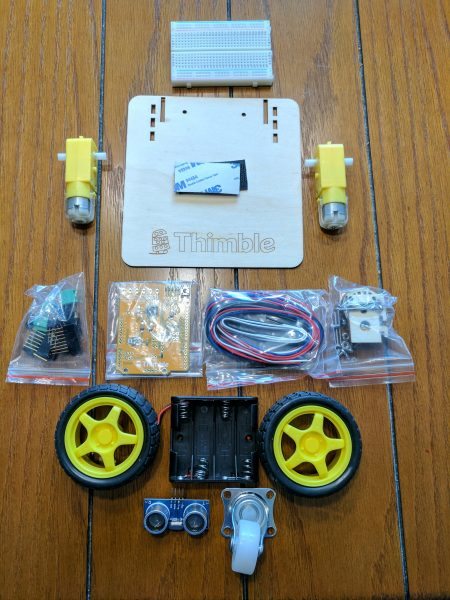
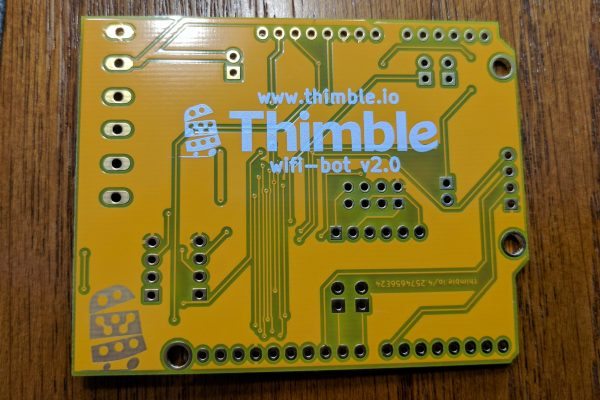
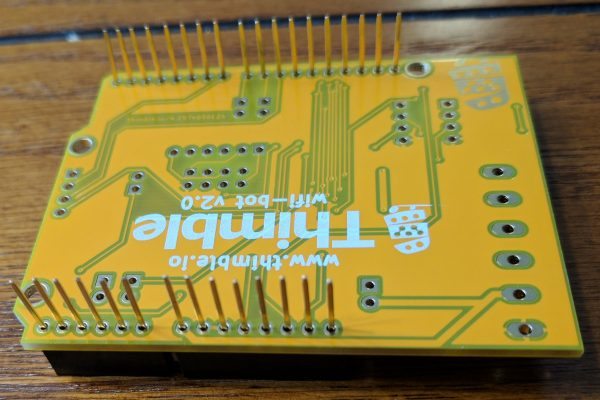
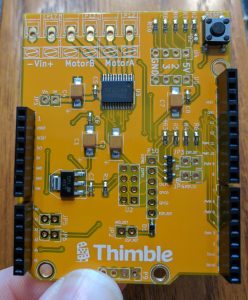
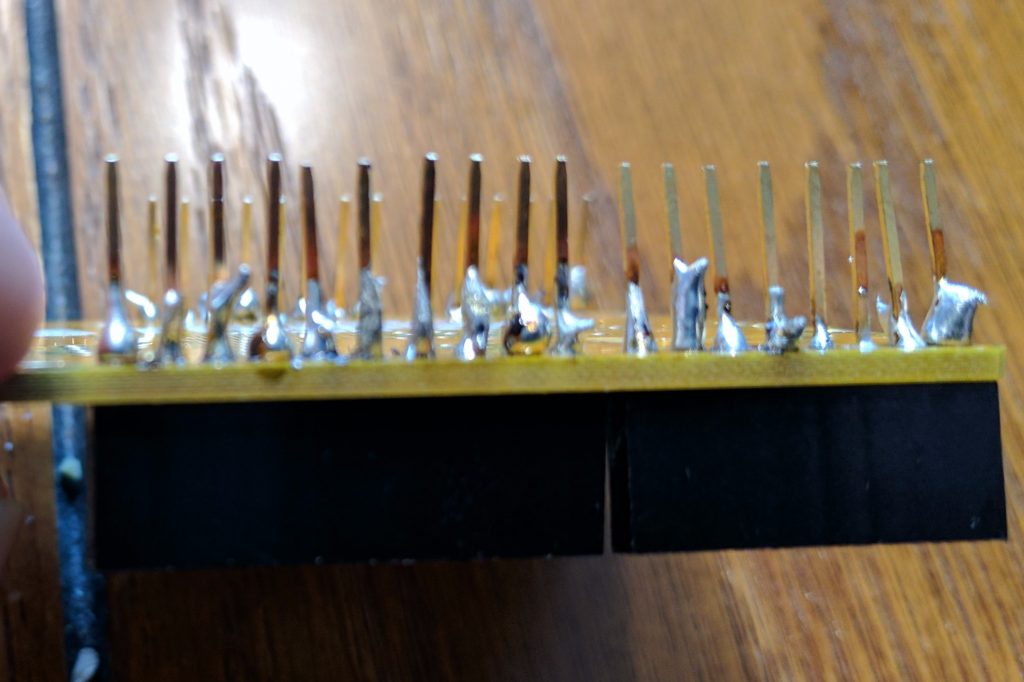
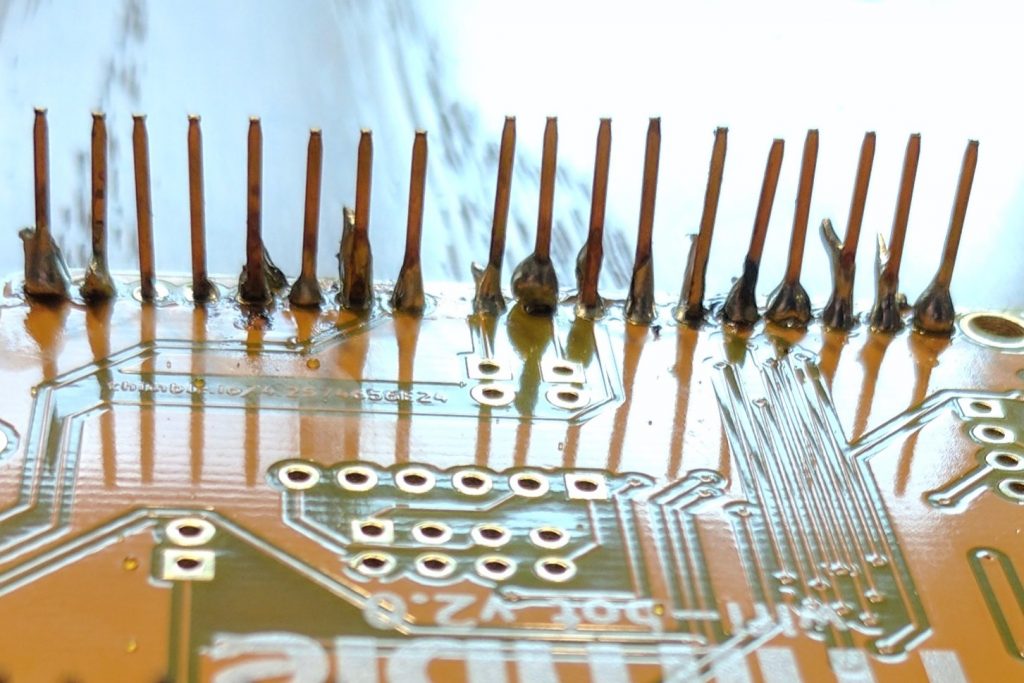
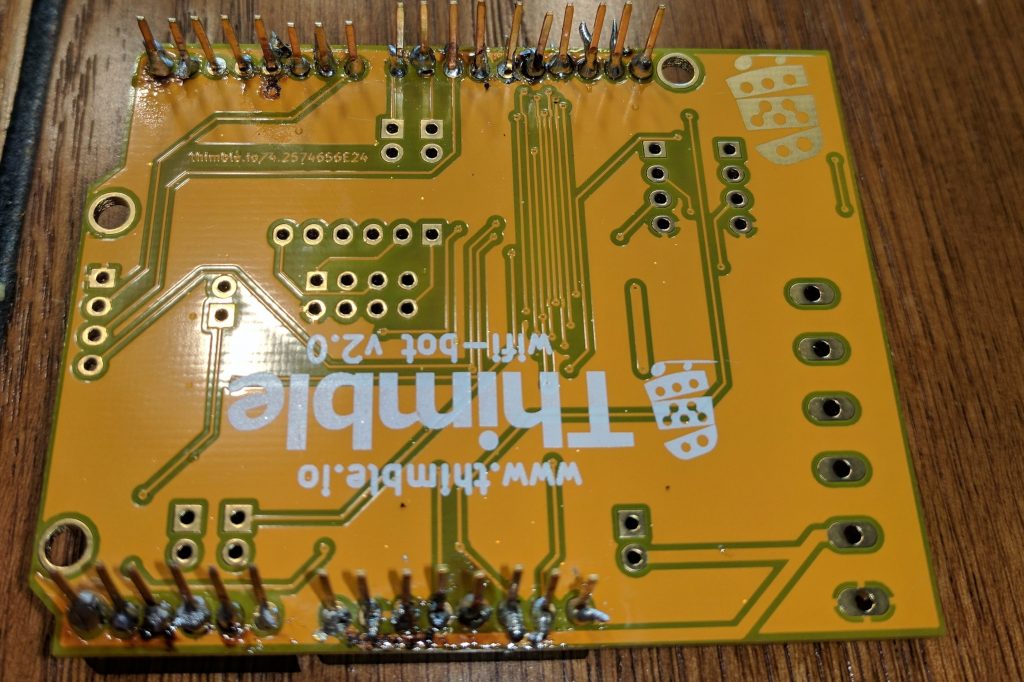
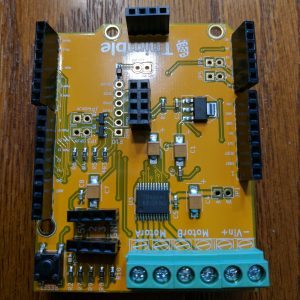
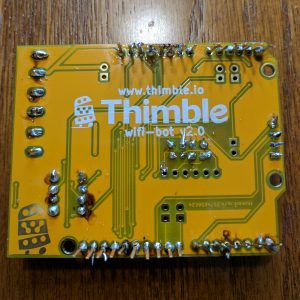
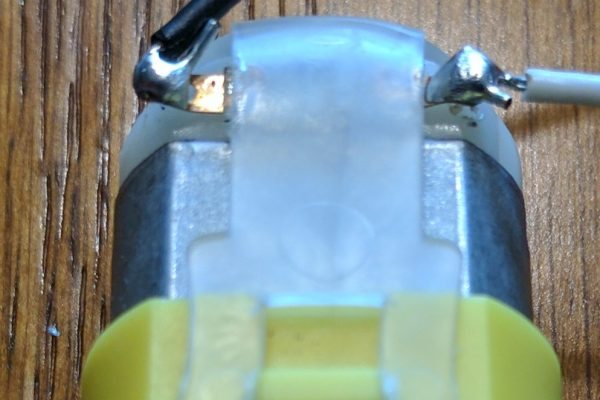
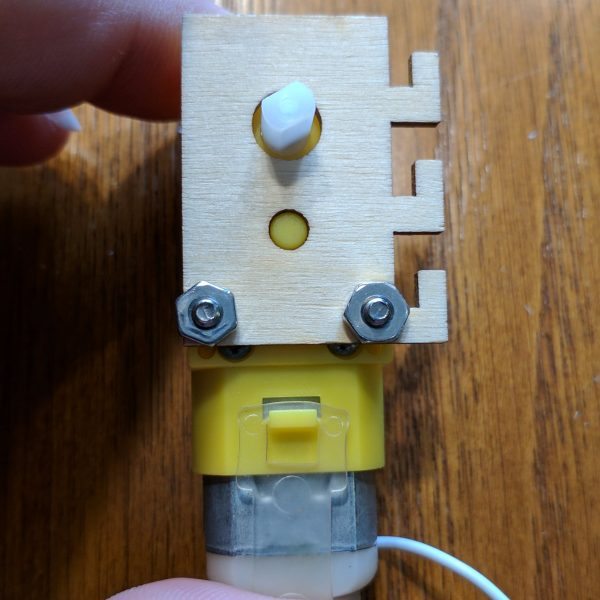
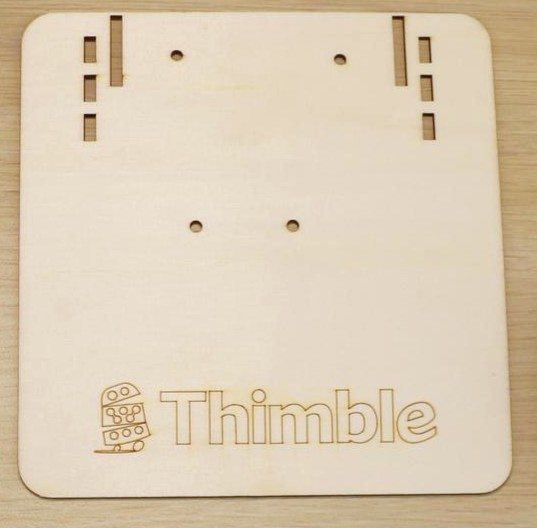
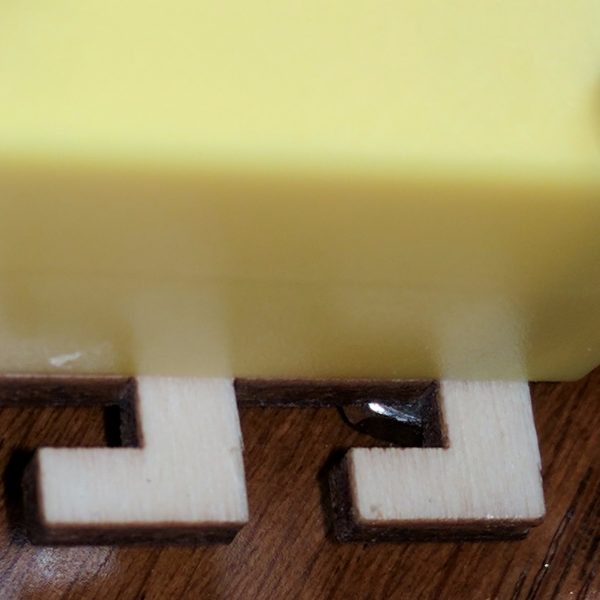
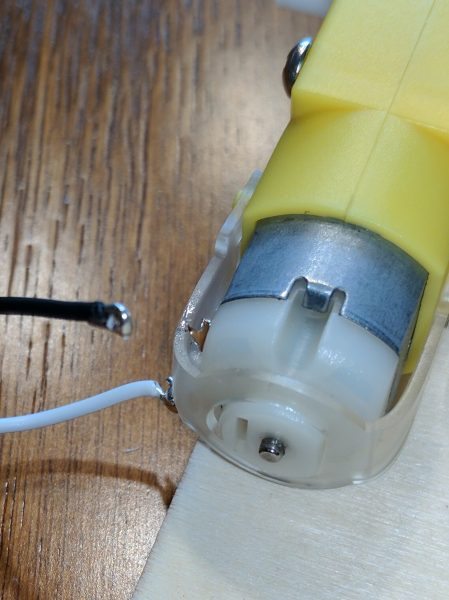
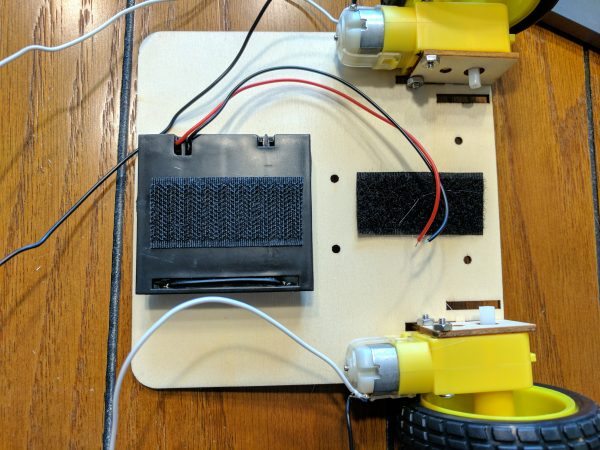
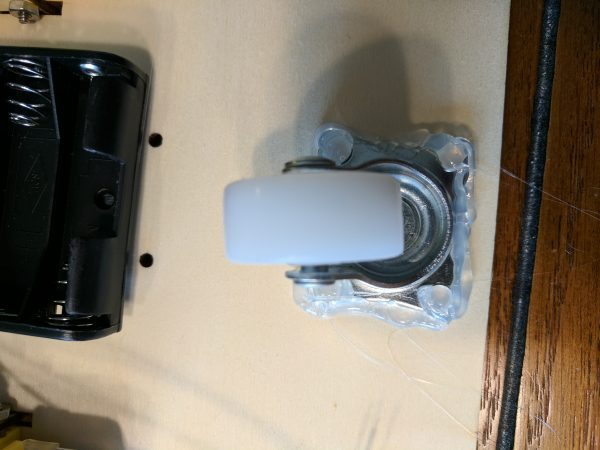
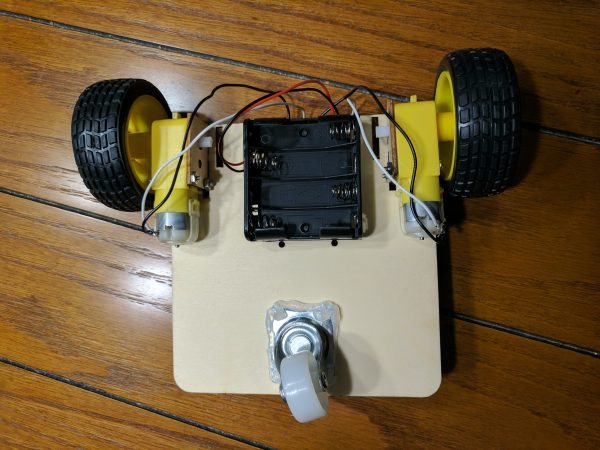


Gadgeteer Comment Policy - Please read before commenting
Why does it have Wi-Fi in its name?
I was disapointed after reading the review that there is nothing about wireless control.
You can control the bot via Wi-Fi; unfortunately, my kit didn’t include the required Arduino board for the bot to function. As a result, I wasn’t able to review that aspect.
If you purchased a subscription, the first kit comes with a board and the bot would be functional.
Very thorough review! I’d give these guys a second chance. This was their very first kit out of a Kickstarter. We all know what the early days are like. They have delivered four kits since January and have heavily improved each project. I only say this because my 14 y/o son started with kit #1 and is just picking this stuff up very quickly in school. Yes – their first kit had some gaps but these type of projects are what’s going to inspire the next generation of Googlers!